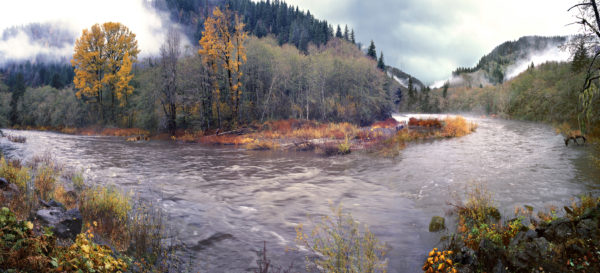If you are unfamiliar with sediment transport principles, sediment is mobilized through the movement of a fluid, either water or air; and predicting how much sediment moves under a given flow rate is a key part of understanding how a landscape will change over time.
Generally speaking, the higher the flow rate, the more sediment can be mobilized. However, there is a transition period when the flow rate is just beyond that which is required for motion, where sediment transport occurs mostly in bursts. This so-called “on-off” phenomenon makes things difficult when trying to measure the average transport rate, which must be done over longer periods of time as the bursts become larger but not as frequent. These bursts have been identified in previous sediment transport studies; however, there is currently no understanding of its physical origin. In other words, this phenomenon has been recognized, but why it happens it not well understood.
Our colleague Ryan Bradly was part of an MIT team that sought to understand this process. They used a series of laboratory flume experiments to show that this on-off intermittency is due to large fluctuations in the speed of the grains rolling on the bed, and that this becomes less pronounced as more grains are lifted off the riverbed and into the fluid. By incorporating the types of intermittency the team identified into stochastic models of sediment transport, it is believed that this could result in improved predictions of sediment flux, including physically based estimates of the uncertainty in the time-averaged sediment flux.
In a nutshell, the team’s efforts provide a framework to connect the on-off phenomenon to channel and flow properties which will result in better measurements and predictions of sediment transport in rivers.
Click here to learn more and read the full publication, co-authored by Ryan Bradley.

















